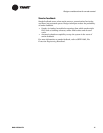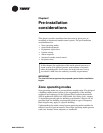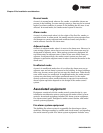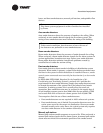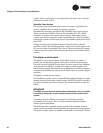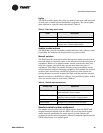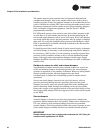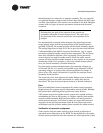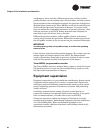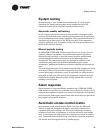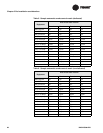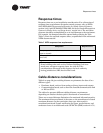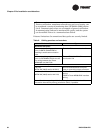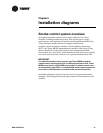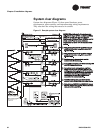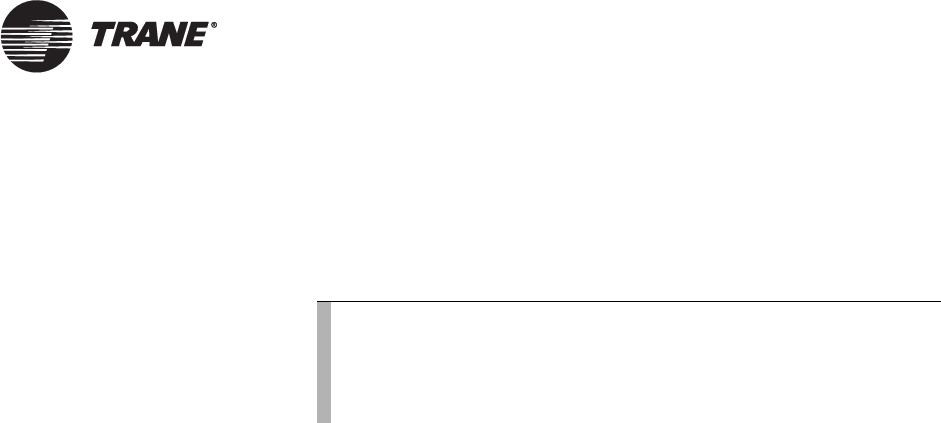
Associated equipment
BAS-APG001-EN 25
Smoke dampers are ordered as a complete assembly. They are typically
two-position dampers and have end switches that indicate the fully open
and fully closed position. The switches are installed in the field. Dampers
actuate with two types of control: pneumatic actuation and electrical
actuation.
For pneumatically actuated smoke dampers, the operating pressure
range (spring range) and the normal position of the damper must be
specified. Typically, the normal position will be closed (normally closed).
The spring range must be high (8–13 lbs) to give the most close-off force.
Uniform Building Code 905.10.2 requires hard drawn, type L, copper
pneumatic piping for smoke control system components. The air source
must have automatic isolation valves separating it from pneumatic
control devices not used for smoke control. Since the smoke control
system will open and close smoke dampers, it may require an air pressure
monitoring switch. If air pressure is lost in the smoke damper control
lines, the switch transmits a Trouble indication.
For electrically actuated smoke dampers, the operating voltages are
24
Vac and 120 Vac. It is usually not possible to get actuators with DC
operating voltages. A spring on the actuator positions the damper if
power is lost. The power-loss position is typically the actuator closed
(normally closed) position.
The electrical power that operates the smoke damper must be from an
emergency power source and is monitored at a point after the last
disconnect. The loss of electrical power initiates a Trouble indication.
Fans
Fans need additional control components for smoke control operation.
Supply/return fan systems require independent control of fans. Multiple
fan system Start and Stop points bypass some safety devices.
VAV systems require the smoke control system to be capable of either
commanding the fans to full capacity or a higher capacity than comfort
controls would command. High-pressure safeties are not bypassed in
smoke control operation. Care must be taken to ensure that increased
capacities do not trip high-pressure cutout devices. Excess pressures
could deactivate fan systems, making them unusable for smoke control.
Verification of operation equipment
Codes require that the smoke control system provide verification of
operation status indications at the FSCS. To accomplish this, the smoke
control system provides devices that monitor the actual operation of fans
Note:
Switches that are part of the actuator do not provide an
acceptable indication of actual damper travel. They only show
the operation of the actuator and not the actual position of the
damper.



